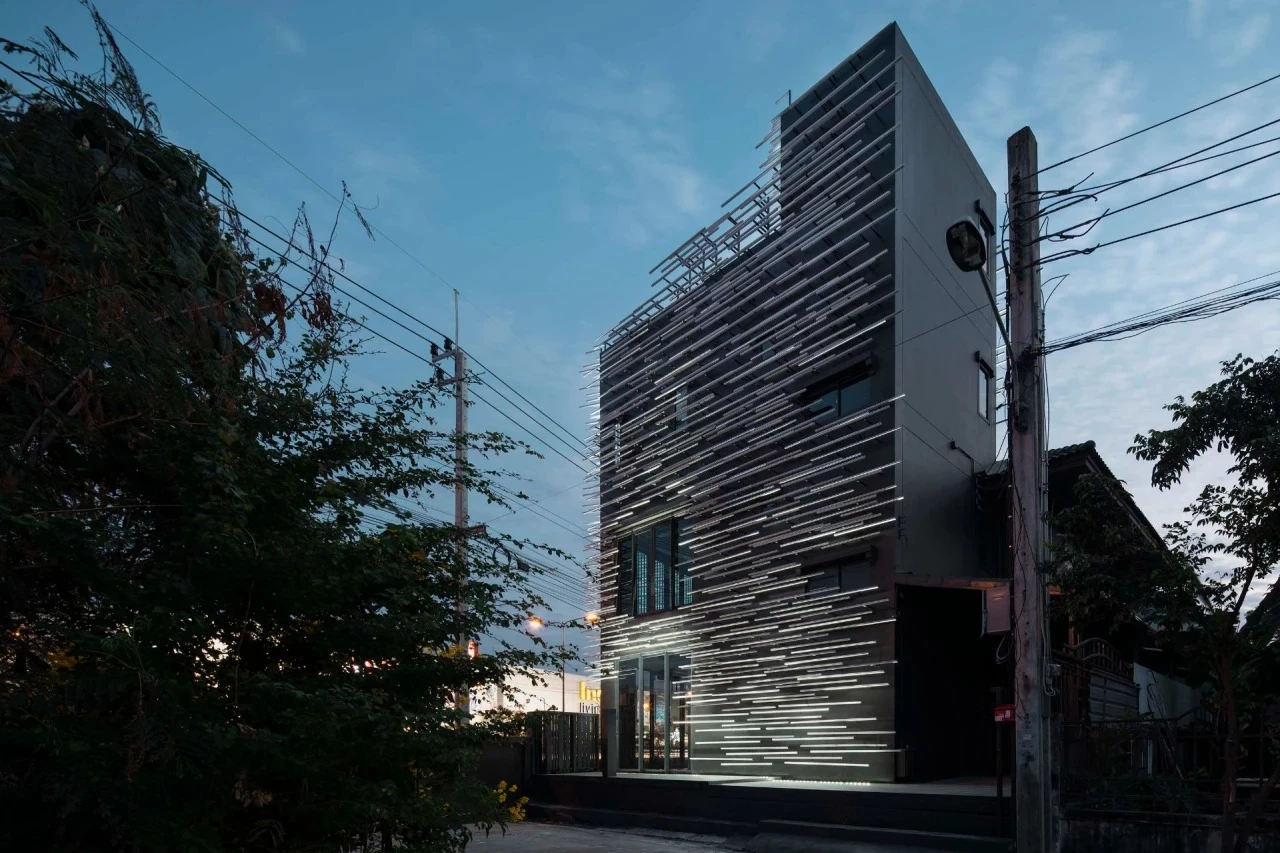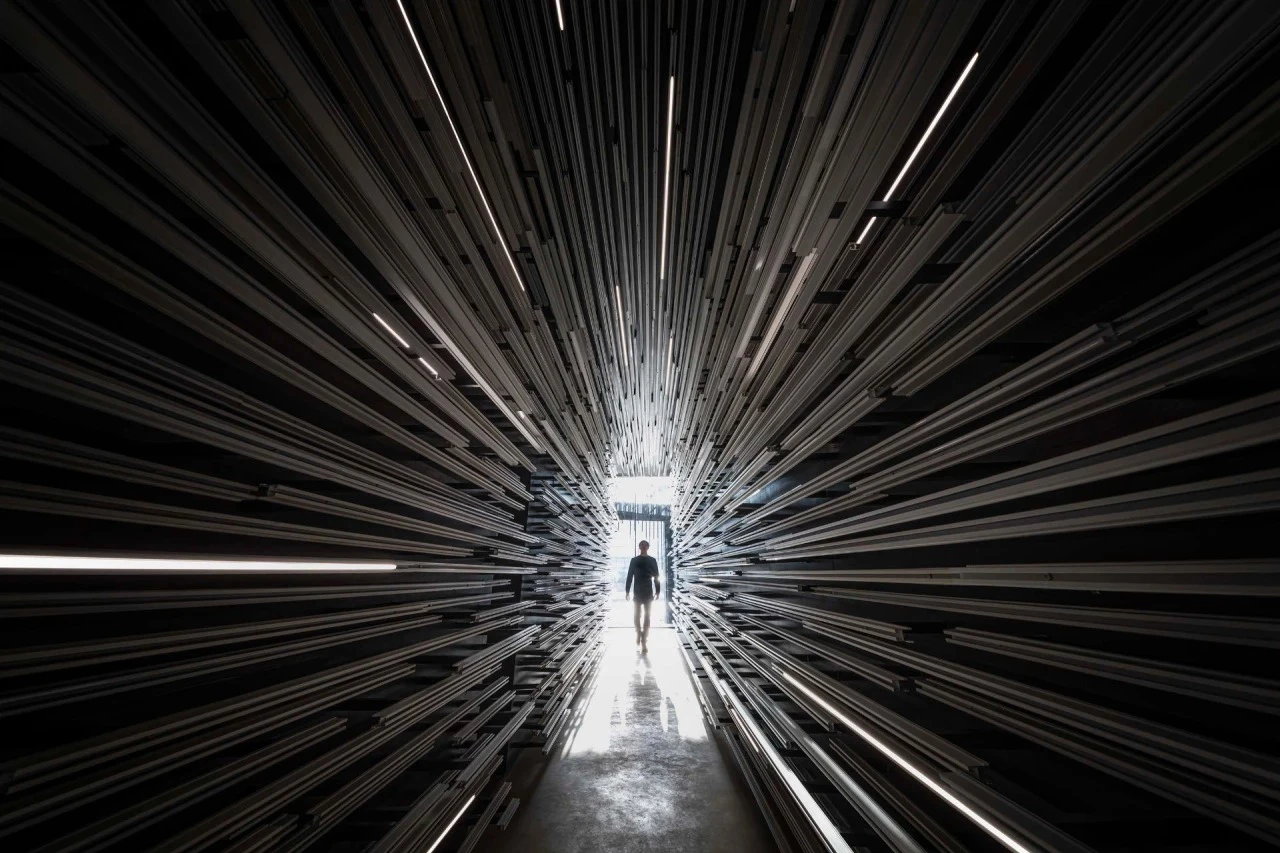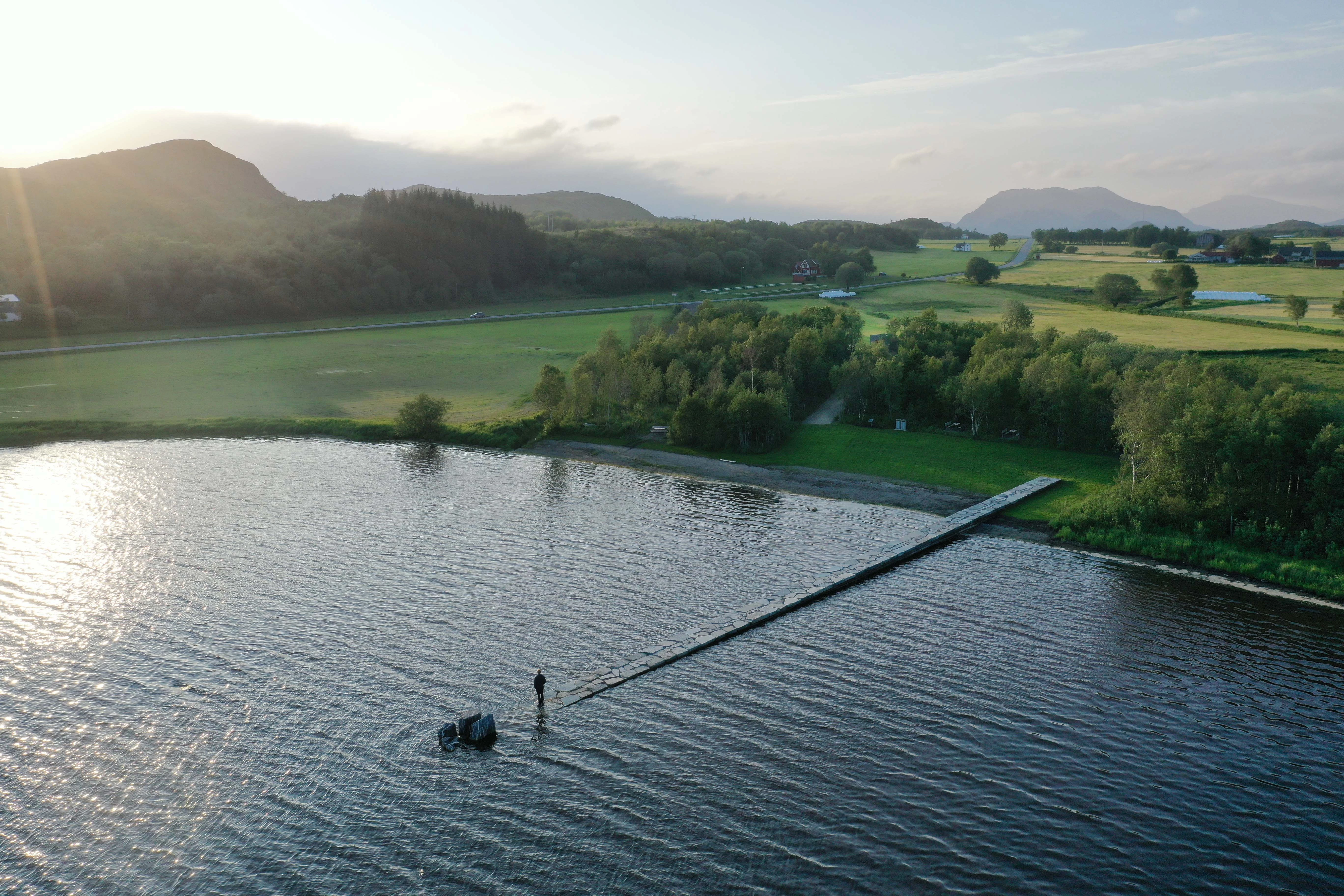MoMA is the abbreviation for Museum of Modern Aluminum. Thailand was once the largest aluminum manufacturer in Southeast Asia at the end of the 20th century. Its diverse and abundant aluminum profiles not only satisfied the local market but were once known for exporting to overseas markets. HAS design and research wanted MoMA to serve not only as a public space but also as a getaway for busy urban dwellers. The building extends the natural landscape of Ko Kret Island to the project site. During the day, MoMA is a dandelion, with its overhanging elements swaying in the wind, bringing softness and lightness to the busy Ratchaphruek Road; at night, MoMA transforms into a firefly, adding a sense of nature and peacefulness to the highly commercialized Ratchaphruek Road.
MoMA not only uses aluminum strips as display items, but also allows them to continue in the architecture, the interior, the landscape, as well as the lighting and furniture, creating a sense of totality inside and outside. The façade is clad with tens of thousands of aluminum strips, each with a slightly different color and texture, just like the feathers of a dandelion. The aluminum strips, combined with LED lighting, extend from the front façade to the two side façades, and then straight through the "tunnel" space on the west side, filtering and dampening the noise of the external environment and guiding visitors to the quiet exhibition place.
The aluminum strips on the façade not only provide a variety of lighting functions, but also shade the interior from excessive sunlight to maintain a comfortable interior environment. The flexibility of the exhibition space can meet a variety of display, reception, and activity needs. On the top floor, the enclosed landscape resembles a floating island with seasonal plants, creating an urban ecological site for fireflies to flourish.
The design process of MoMA began with the study of aluminum signboards commonly seen on the streets, and then used aluminum as an element to link the entire building. Through the investigation and research of aluminum profiles, a distinct architectural texture is created, and a new sense of vernacular is discovered in Thailand's concrete jungle.
















